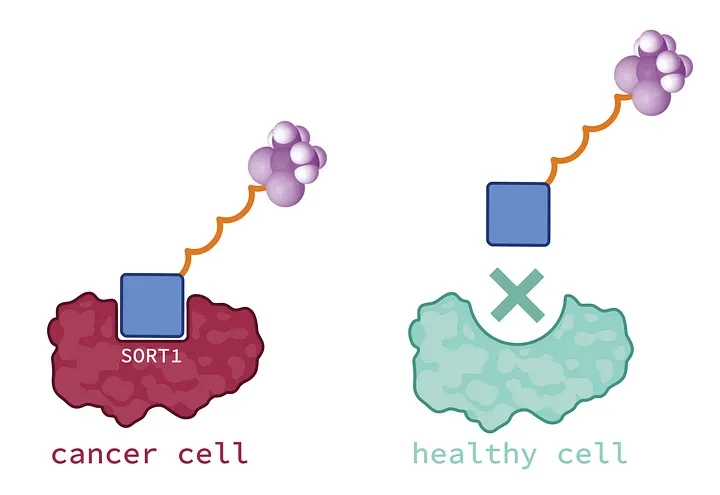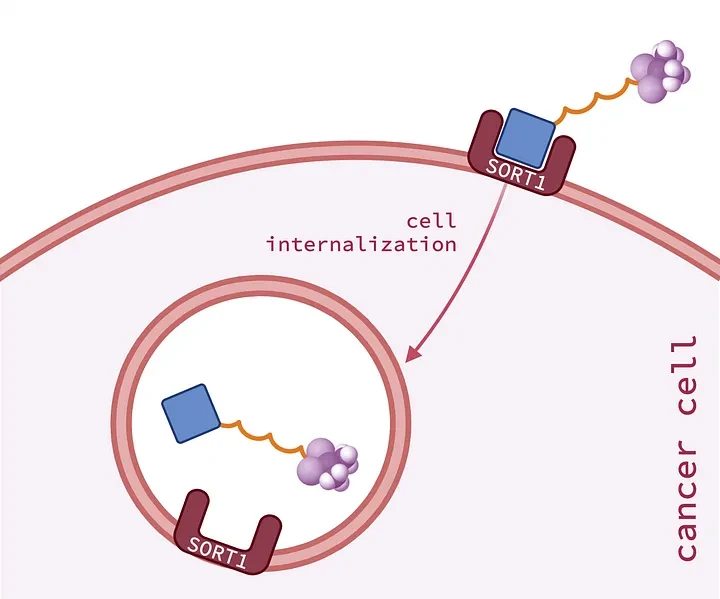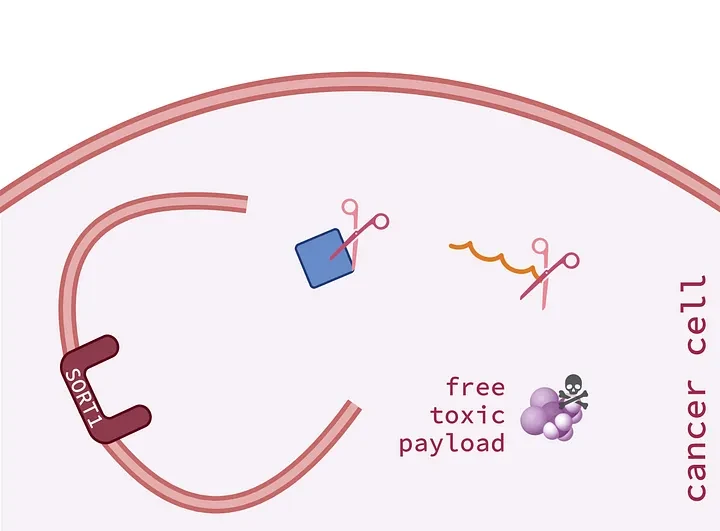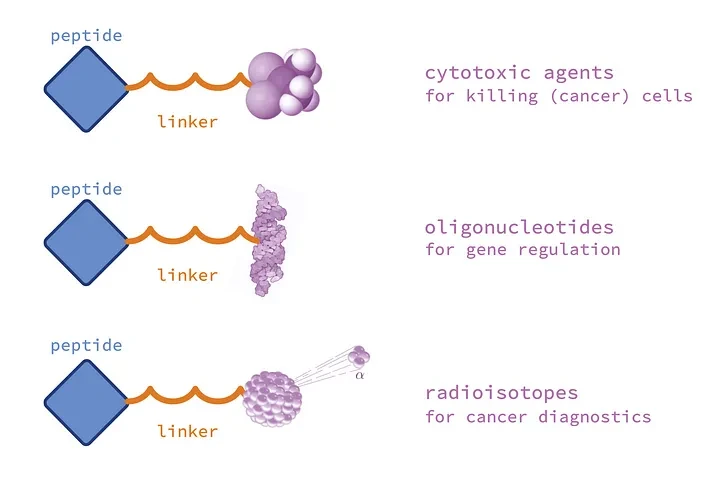Using AI for Breast Cancer Treatment
— ai, smart drug, breast cancer, proteinqure — 4 min read
My mother-in-law is currently being treated for advanced stage cancer.
I wanted to share this article from ProteinQure.
Chemotherapy, one of the primary treatments for cancer, unfortunately doesn’t differentiate between healthy cells and cancer cells. Imagine sending a SWAT team into a building to remove the bad guys but they can’t tell friend from foe. The result? A lot of unnecessary damage. At ProteinQure we are working to solve this problem with our first internal drug discovery program focused on an especially deadly and currently untreatable type of breast cancer. We are thrilled to share some exciting news from our recent press release with you:
We conducted our first animal study with our most promising internal drug candidate, ARB-1-6. The study was overwhelmingly successful in demonstrating ARB-1-6’s ability to shrink breast cancer tumours without killing surrounding healthy cells. Our groundbreaking research revolves around a special protein on the surface of some breast cancer cells called ‘sortilin’ or SORT1.
SORT1: The Doorway to Breast Cancer Cells
So, what’s so unique about SORT1? This protein acts like a doorway into the cell. Certain forms of aggressive cancer, such as triple-negative breast cancer (TNBC), have a lot of these doorways. Recognizing the prevalence of these cellular doorways in TNBC, ProteinQure has innovatively designed a ‘smart’ drug. This ‘smart’ drug is like a specially crafted key, tailored to target and unlock the SORT1 doorway, ensuring the direct and targeted delivery of a medicine right into the cancerous cell.
 This focused approach has two significant benefits. First, it directly targets the harmful cancer cells, making the treatment more effective. Second, it minimizes damage to the healthy cells surrounding the cancer, which means fewer side effects for patients.
This focused approach has two significant benefits. First, it directly targets the harmful cancer cells, making the treatment more effective. Second, it minimizes damage to the healthy cells surrounding the cancer, which means fewer side effects for patients.
Pioneering ‘smart’ drugs
ProteinQure’s first ‘smart’ drug ARB-1-6, scientifically named a peptide-drug conjugate (PDC), is a combination of a peptide, a linker and a toxic payload.

ARB-1-6 was computationally designed using our proprietary software platform ProteinStudio. This platform utilizes a combination of molecular simulations on supercomputers and advanced AI models to design and optimize protein molecules for various properties. ProteinStudio allowed us to tweak and optimize the peptide in such a way that it strongly & selectively binds to the SORT1 protein.
You can think of the peptide as the GPS system of the PDC, guiding the toxic payload directly to the SORT1 protein on the outside of the breast cancer cells. In other words, we’re creating guided missiles. Instead of damaging everything in their path, these missiles (or “smart” drugs) target only the harmful cancer cells, leaving healthy cells unharmed.
 ARB-1-6 binds strongly to SORT1 protein on the outside of breast cancer tumour cells. It does not bind to healthy cells since they barely have SORT1 proteins.
Upon reaching a tumour cell, ARB-1-6 latches onto the SORT1 protein and the cell absorbs the drug. Once inside the cell, the cell naturally starts to disassemble the PDC by breaking it down into its three components: peptide, linker and toxic payload.
ARB-1-6 binds strongly to SORT1 protein on the outside of breast cancer tumour cells. It does not bind to healthy cells since they barely have SORT1 proteins.
Upon reaching a tumour cell, ARB-1-6 latches onto the SORT1 protein and the cell absorbs the drug. Once inside the cell, the cell naturally starts to disassemble the PDC by breaking it down into its three components: peptide, linker and toxic payload.
 Initially, the peptide and linker shielded the payload’s toxic effects which allowed it to travel through the patient’s body without toxic side effects. However, once released it unleashes its full toxic potential spelling disaster for the tumour cell. The toxic payload now induces so-called ‘cell death’ effectively leading the tumour cell to self-destruct.
Initially, the peptide and linker shielded the payload’s toxic effects which allowed it to travel through the patient’s body without toxic side effects. However, once released it unleashes its full toxic potential spelling disaster for the tumour cell. The toxic payload now induces so-called ‘cell death’ effectively leading the tumour cell to self-destruct.
 Our recent animal studies have bolstered our excitement around ARB-1-6. When tested, this drug significantly slowed down the growth of breast cancer tumours in animals, without causing the harmful side effects typically associated with chemotherapy. These positive outcomes emphasize the potential of the targeted ‘smart’ drug approach, offering hope for more effective and safer treatments in the future.
Our recent animal studies have bolstered our excitement around ARB-1-6. When tested, this drug significantly slowed down the growth of breast cancer tumours in animals, without causing the harmful side effects typically associated with chemotherapy. These positive outcomes emphasize the potential of the targeted ‘smart’ drug approach, offering hope for more effective and safer treatments in the future.
What’s Next?
ProteinQure isn’t stopping here — we’re pressing on to test our PDC molecules further, aiming to refine and expand their applications. Combining ProteinStudio and the PDC delivery platform, the team is investigating the potential of delivering non-toxic payloads such as gene snippets or radioactive atoms. Gene snippets or ‘oligonucleotides’ can turn off specific harmful components in diseases and radioactive atoms can be used to diagnose cancers within the body. This not only amplifies the therapeutic capabilities of our delivery platform but also broadens the scope of diseases and conditions we can tackle.

Final Thoughts
In a world where we often hear of the harsh realities and side effects of cancer treatment, it’s important to make treatments safer and more efficient. With triple-negative breast cancer still awaiting FDA-approved solutions, our PDC molecules present a beacon of hope. Our novel approach offers a promising step forward in the ongoing battle against breast cancer.
For those interested in diving deeper into the technical details, check out the press release and our SORT1 whitepaper. All figures were created with BioRender.com
Share this post!
Thanks for reading! Don't forget to smash that share button and subscribe.